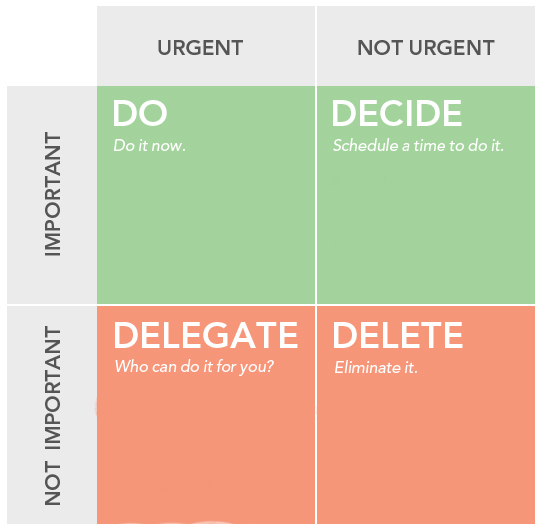Learning - E03 - Why you keep neglecting important tasks and how to fix that
In this article we will briefly examine the importance of the Eisenhower decision matrix and its applications in our daily life.
Not only Urgency matters #
In my job, I have taken on more and more responsibility over the last few years, both in terms of tasks and in terms of participating in or managing projects.
As a result, the number of tasks assigned to me has grown steadily.
It was therefore necessary for me to find a way of dealing with this workload and volume of work.
The situation is similar in our private lives, be it through our own relationships, friends and family, but also in the context of hobbies and obligations.
You also have to organise your own household and deal with bureaucratic work.
A naive approach here would be to sort the tasks according to urgency at all times.
This would ensure that all urgent tasks are completed first and that no deadlines are forgotten.
Right?
Unfortunately, the reality is not so simple.
The prioritization problem is multi-dimensional #
Because in addition to the dimension of urgency, there is another dimension that is just as relevant and that has to be assigned to tasks.
This describes the importance of the tasks.
This could be used to create a two-dimensional model that combines all combinations of these two factors.
Fortunately, this already exists as part of the so-called "Eisenhower Matrix", displayed in the following image.

[1]
With the help of their quadrants, all tasks to be completed can be categorised.
This matrix can be used as an excellent illustration of the problems associated with the naive prioritisation of tasks based solely on their importance.
The X-axis shows the urgency of the problems, while the Y-axis is used for the importance of the problems.
Although these terms may intuitively appear to have the same content, their meaning is all the more different.
The urgency of a issue is measured in terms of the time remaining to complete the task, with urgency being antiproportional to time.
In contrast, the importance of an issue is measured by the relevance associated with the task.
Important but not urgent #
It is only from this matrix that it becomes clear that prioritising urgent tasks alone, for example, neglects all those tasks that are immensely important but not urgent.
And it is precisely this fact that is the primary problem for many people in their professional and private prioritisation of tasks.
Whilst it is obvious that urgent and important tasks need to be completed, important but non-urgent tasks are usually neglected.
For example, it is both urgent and important to create backups, but the validation of these is only important but not urgent and is therefore usually neglected.
The same applies to private life; food intake is both urgent and important. In contrast, regular exercise is only important but not urgent.
It is therefore all the more important to consider both dimensions when prioritising tasks and to develop a sensible process for completing them (I may go into the possibilities for this separately in another article).
While a Kanban board will be useful in your professional life, in your private life it is sufficient to block time for sport in your diary every week.
Takeaway and Summary #
To summarise, it can be said that the Eisenhower Matrix literally introduces a further dimension of consideration that enables us to prioritise tasks sensibly.
Important and non-urgent tasks are still not prioritised, while urgent and important tasks are still to be completed immediately.
What is relevant here is that important but non-urgent tasks should not be neglected or postponed on a recurring basis, but should be scheduled to ensure that they are completed.
The remaining quadrant differs in its handling between professional and private life.
In professional life, urgent but not important tasks should be delegated to other employees to ensure that important and urgent tasks are dealt with.
In private life, this option is often limited, so it can be useful to look for a way to automate these tasks.
